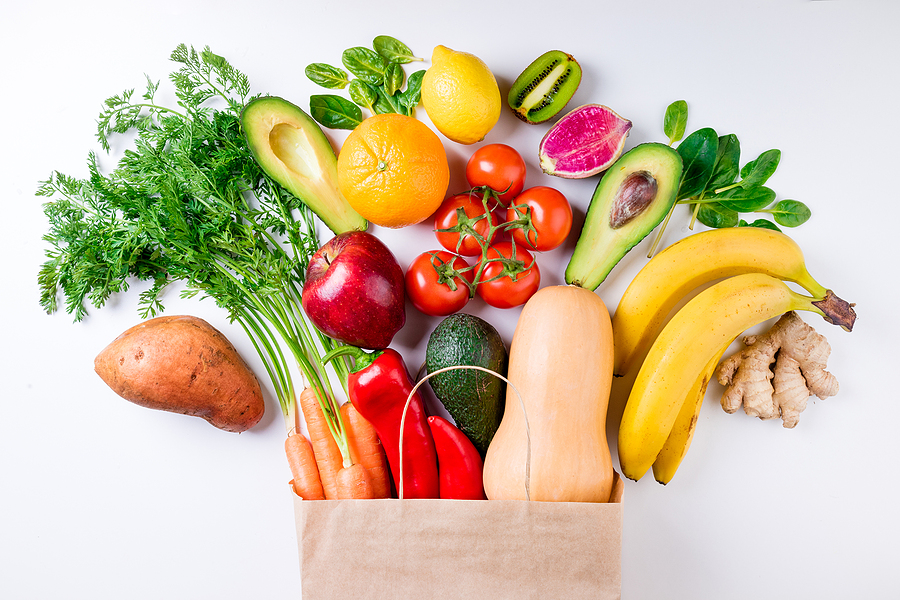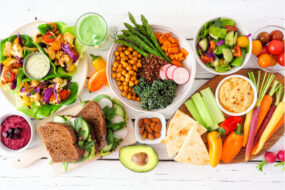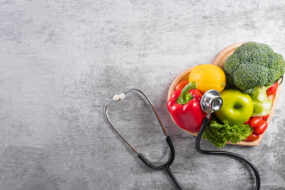
Table of Contents
Making a Shopping List for an Insulin Resistance Diet
When making a shopping list for an insulin resistance diet, remember to keep it flexible. Stick to your list of healthy foods, but be open to simple swaps. Instead of buying a costly side dish, substitute it with more affordable vegetables. You can even add a few more veggies to your list to cut your grocery bill. Adapting your shopping list to fit your budget will help you stick to your insulin resistance diet's goals.
Unprocessed foods
You might not be aware of it, but nearly all of the foods you purchase in the grocery store are processed. For example, some produce is washed or chilled after harvest. While unprocessed foods may seem more healthful, saturated fats may cause insulin resistance. Other examples include meat, fish, and eggs that have not been processed. They also may be whole-grain bread without inedible husks or shells.
Your shopping list for an insulin resistance diet doesn't need to be restrictive, and you can include just about every food group on it. Vegetables, for example, provide a variety of nutrients, including fiber and essential vitamins. They also usually have low levels of sugar. Fruits can get a bad rap for their sugar content, but if you eat fruit in their whole state, you can benefit from their high antioxidant levels.
Processed foods can be grouped into two categories: ultra-processed foods and refined foods. Unprocessed foods are generally the best options for metabolic health, because they contain fewer ingredients and have minimal processing. Ultra-processed foods, on the other hand, have the least amount of whole ingredients and may also contain synthetic ingredients. The resulting effects can affect your metabolism in a number of ways, including reduced insulin sensitivity, inflammation, and disrupted microbiome.
A good rule of thumb when selecting foods for an insulin resistance diet is to avoid ultra-processed food. Foods that are ultra-processed have lengthy ingredient lists, and may include artificial sugars, dextrose, and maltose. These foods bear little resemblance to real food. This means that the best options for a shopping list for an insulin resistance diet are those that have little or no processing at all.
Avoiding saturated fats is essential for those with insulin resistance. Saturated fats are unhealthy and increase insulin resistance. Monounsaturated fats are a better option. They are better for your health than saturated fats, animal fats, and refined grains. You should also avoid eating processed foods with high amounts of sugar. A shopping list for an insulin resistance diet should contain foods low in these ingredients as well.
Low-GI foods
A low-GI diet has shown promising results in controlling blood glucose levels in diabetic patients. A meta-analysis of 19 randomized controlled trials involving 840 diabetes patients found that eating foods with low GI values lowered the level of glycated hemoglobin, fructosamine, and HbA1c. This diet is a promising solution for diabetic patients with high blood sugar levels and is associated with a reduction in oxidative stress, inflammatory mediators, and thrombolytic function. However, further research is needed to determine its long-term effects in metabolic disease.
The study found that low-GI diets decreased body fat by increasing insulin levels in diabetic patients. However, the dietary intervention did not result in a substantial change in body composition. The effect size was 0.78, which may be too large to warrant an intervention. Nonetheless, these findings support the benefits of a low-GI diet for diabetes patients. Further research is needed to determine whether it is safe for people with diabetes to follow a low-GI diet for the long-term.
A low-GI diet can be very beneficial in regulating blood sugar levels and managing weight. Incorporate some low-GI foods into your diet and make sure that the amount of carbohydrates you consume is not too high. Also, include non-starchy vegetables, fruits, and whole grains. Stevia and monk fruit can help regulate the balance of macronutrients in your diet. You can also try a low-GI app to help you make healthy grocery shopping decisions.
A low-GI diet can also reduce cancer risks. The high-GI diets have been linked to an increased risk of some cancers. This diet should be part of your overall diet if you want to lower your risk of diabetes and other chronic illnesses. The gastrointestinal tract is the most important part of the body, so eating less sugar-rich foods is highly recommended. This diet may help you lose weight and feel better.
High-GI foods cause a rapid increase in insulin. It is important to keep the insulin levels under control by increasing fiber intake and limiting processed food. Consuming more food also increases your risk for obesity. Low-GI foods can help control appetite. They can delay hunger while increasing the feeling of satiety. Combined with increased dietary fiber, a low-GI diet can help you lose weight and insulin resistance.
Vegetables
One of the first things you should do to improve your insulin resistance is to eat more vegetables. Not all vegetables are the same. You should aim to choose non-starchy ones, because they are nutrient-dense, while starchy ones are high in calories and carbohydrates. Aside from vegetables, there are other food groups that you should eat as well, such as fruits. You should also make sure to eat enough fruit, because it contains lots of fiber, essential vitamins, and antioxidants.
Legumes should be included in your diet if you have a history of insulin resistance. Legumes are rich in fiber, plant-based protein, and vitamins, minerals, and antioxidants. In addition, you should limit your intake of saturated fats, as they may contribute to insulin resistance. A good way to eat more legumes is by preparing dishes like Chana saag, which is a delicious mixture of spinach and chickpeas. Increasing your protein intake may also improve your insulin sensitivity, so it's best to choose high-quality, unprocessed protein.
Consuming vegetables high in fiber is also an effective way to control blood sugar. Studies have linked a diet that includes more vegetables with reduced risks of being overweight. In fact, according to Harvard University, a high-fiber diet is associated with a reduced risk of type 2 diabetes. But it's important to note that obesity is a major risk factor in type 2 diabetes. As a result, vegetables can help prevent diabetes.
Another vegetable that can be included in your diet to improve insulin resistance is avocado. This fruit is rich in nutrients, as well as fiber. Avocados also contain monounsaturated fats, which may improve your body's ability to use insulin. Avocados are one of the vegetables that contain monounsaturated fats. They are good sources of monounsaturated fats, which may be the best choice for people with insulin resistance.
In addition to eating more vegetables, you should also increase the variety of your snacks and meals. Aim to eat at least 30 different plants each week. This will ensure you get more variety and enhance your weight loss. Also, keep up with exercise and physical activity to prevent insulin resistance. When modifying your diet, make sure to consult your doctor to make sure that you are making healthy food choices. This will help you lose the extra pounds that you need to lose while improving your insulin resistance.
Lean meats
A very lean meat is skinless chicken or turkey. Fish, game, and poultry are also considered lean. Red meat, processed meat, and poultry do not fall into this category. Red meat is a major source of saturated fat and contributes to insulin resistance. Meat consumption has increased significantly in the United States and worldwide in recent decades, with red meat accounting for the majority of that increase. This increased risk of CVD may be attributed to the increasing prevalence of insulin resistance among non-diabetics.
In addition to lean meats, you should eat plenty of unprocessed fruits and vegetables. These foods contain high levels of fiber and essential vitamins and minerals and are relatively low in sugar. Fruits, which often get a bad rap, are an important part of an insulin resistance diet. They provide fiber, essential vitamins, and antioxidants, and are also rich in vitamins and minerals. While the sugar content of fruits can be off-putting, you should include fruit in your meals on a daily basis.
One study of men and women found that meat consumption was linked to insulin resistance in middle-aged women with no prior diabetes. This association was significantly influenced by the participants' body fat percentage and BMI. The researchers found that women who ate lower meat intake had lower odds of developing IR. But when these factors were adjusted, the association was no longer as strong. The researchers concluded that the meat-IR relationship may be weaker when body fat is controlled.
Compared to other food groups, eating more meat is also associated with a lower risk of developing type 2 diabetes. Red meat is high in fat, which is a potential cause of insulin resistance in women. The study also found a negative association between red meat intake and insulin resistance among women. Although this association was found after controlling for possible confounding factors, it is still important to eat red meat as part of a healthy diet if you want to improve your chances of preventing diabetes.










